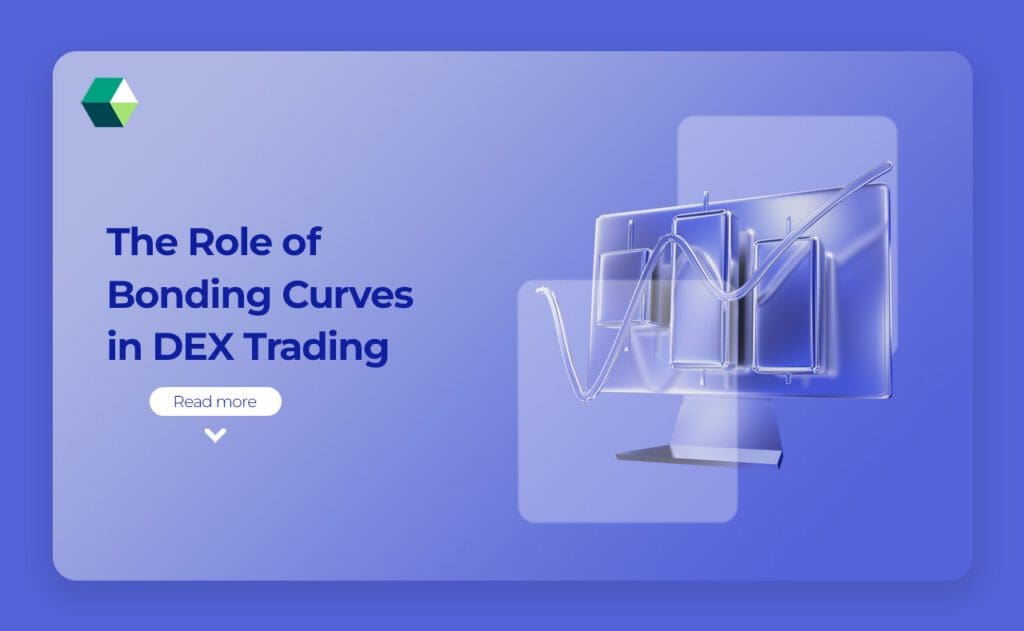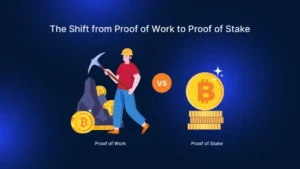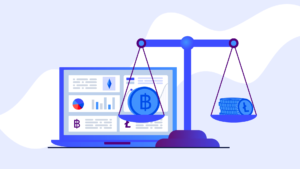
In the world of decentralized finance (DeFi), bonding curves are becoming a key tool for managing token Trading on Decentralized Exchanges (DEXs). They help set the price of tokens and ensure that trading is smooth and fair. Let’s break down what bonding curves are, how they work, and why they matter for DEX trading.
What is a Bonding Curve?
A Bonding Curve is a mathematical model used in decentralized finance (DeFi) to manage the supply and price of a token. It establishes a dynamic relationship between the quantity of tokens available and their price, which adjusts automatically based on demand. When more tokens are bought, the price increases according to the curve’s formula, and when tokens are sold, the price decreases. This system ensures continuous liquidity by automatically setting the price of tokens based on their supply, eliminating the need for traditional order books. Bonding curves are commonly used in decentralized exchanges (DEXs) and other DeFi platforms to facilitate trading, incentivize liquidity, and provide a predictable pricing mechanism.
Impact of Bonding Curves in DEX Trading
Bonding curves help Decentralized Exchanges (DEXs) set token prices automatically, adjusting based on supply and demand. As more tokens are bought, prices rise; as they’re sold, prices fall—keeping trades smooth and reducing volatility. DEX Software Development Services design and optimize bonding curves to match trading needs, ensuring efficiency, stability, and scalability. With the right setup, bonding curves enhance user experience, boost liquidity, and attract more traders to the platform, making them vital for modern DEX operations.
Different Types of Bonding Curves in DEX
-
Linear Bonding Curve
This is the simplest type, where the price increases or decreases in a straight line as more tokens are bought or sold. It’s easy to understand and implement but may not always provide the most efficient pricing for liquidity.
-
Exponential Bonding Curve
In this model, the price rises exponentially with the amount of tokens bought. This means the price increases rapidly as demand grows, which can be great for incentivizing early adopters but can also lead to high prices if demand surges.
-
Logarithmic Bonding Curve
Here, the price increases at a decreasing rate. Initially, the price rises quickly, but as more tokens are bought, the rate of increase slows down. This can help stabilize prices over time and offer a more predictable pricing model.
-
Power Curve
This type of curve allows the price to increase according to a power function, meaning the rate of price increase can be adjusted based on specific needs. It offers flexibility and can be tailored to fit different market conditions.
-
Concave Curve
A concave bonding curve increases the price at a decreasing rate, making the price rise more slowly as more tokens are bought. This can help maintain more stable prices and reduce volatility.
-
Convex Curve
A convex curve increases the price at an increasing rate. This creates more volatility and higher prices as demand increases, which can be used to encourage early participation.
Use Cases of Bonding Curve Liquidity
Bonding curves are useful in various ways for Decentralized Finance (DeFi) Platforms and Decentralized Exchange (DEX) Development. In token sales, bonding curves set prices in a way that starts lower and increases as more tokens are bought. This encourages early investors to join in at better prices and helps raise money for new projects. For liquidity pools, bonding curves keep prices steady and predictable, which motivates people to provide liquidity and stay active in the market.
In decentralized governance, bonding curves help manage the supply and price of tokens used for decision-making, encouraging users to participate and have a say in platform changes. They also play a role in funding projects, adjusting token prices based on how many people want to buy them, which helps raise capital. In Decentralized Exchange Development, bonding curves make trading smoother and more reliable by automatically setting token prices. They also help incentivize participation by rewarding early users with better prices and maintaining a stable token economy. Overall, bonding curves make trading and investing easier and more engaging for everyone involved.
The Future of the DEX Bonding Curve
The future of bonding curves in decentralized exchanges (DEXs) is promising, with advancements expected to enhance liquidity, pricing, and stability. As DeFi evolves, bonding curves will become more adaptive and integrated with other protocols, improving responsiveness to market conditions. Innovations in algorithm design may reduce volatility and boost trading efficiency. As DEXs expand and new use cases emerge, bonding curves will remain essential for creating transparent, efficient, and user-friendly trading environments within the decentralized finance ecosystem.
What Makes Nadcab Labs for Bonding Curves?
Nadcab Labs is a leading provider of customized Bonding Curve Solutions, tailored for DeFi platforms and DEXs. With deep blockchain expertise, they design advanced mathematical models to optimize liquidity and pricing. Emphasizing security and reliability, Nadcab ensures robust, up-to-date systems backed by ongoing support. Clients benefit from innovative technology, expert guidance, and high-quality solutions that enhance the performance and efficiency of decentralized trading platforms.






